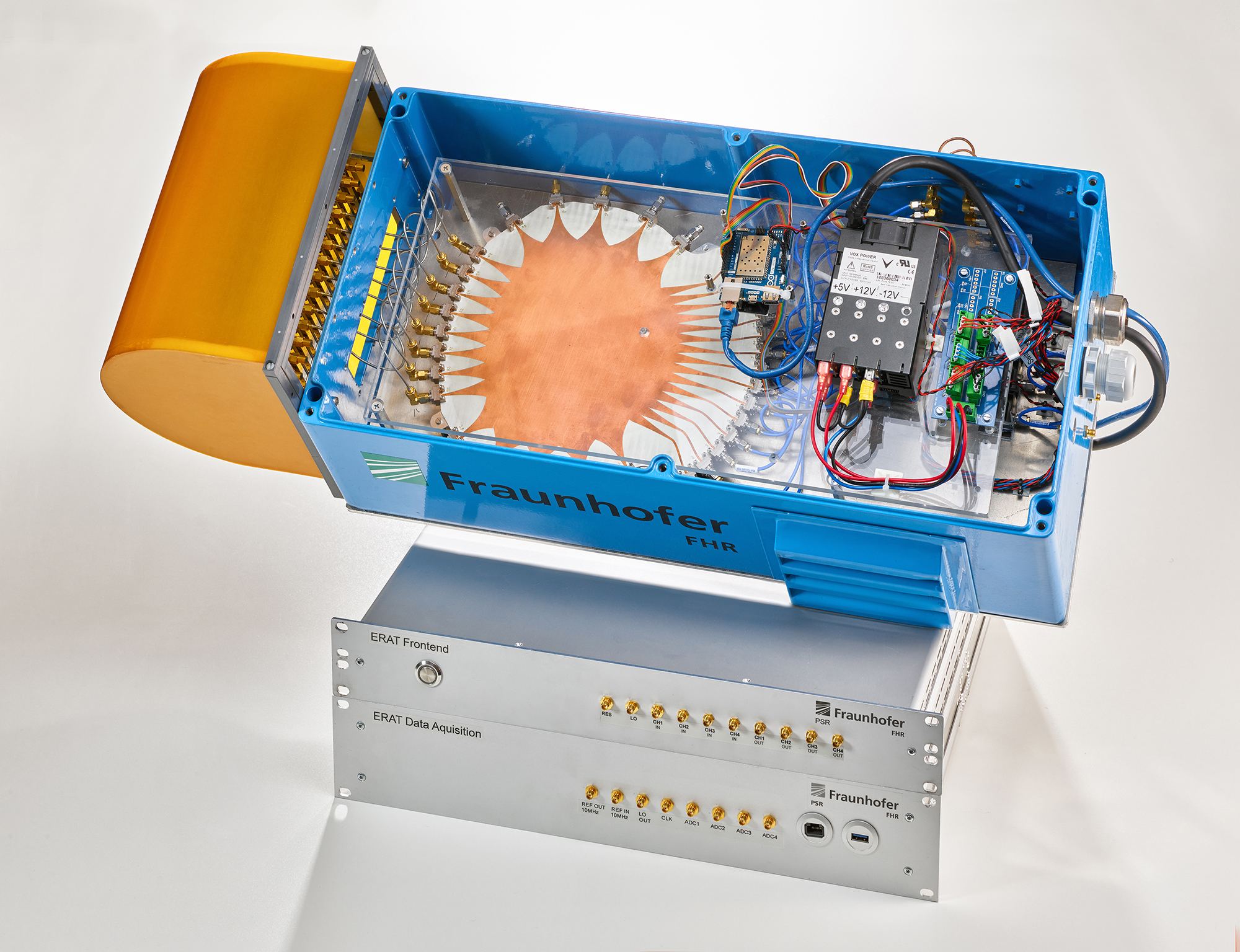Hunderd becomes one: Combining antennas on frigates & co.
Quite frequently, the shape of an aircraft can already be recognized without its outer skin: based on the distribution of its tightly packed antennas alone. That is because, to date, each function requires its own antenna system. Thus, the available space is completely exhausted. At Fraunhofer FHR, different approaches are being developed to minimize this antenna forest and to resolve the issues associated with this.

Far more than a hundred sensor systems and antennas are clustered together on military platforms such as aircraft, ships, and frigates – occupying even the smallest of spaces. This causes problems, not only due to lack of space: The antennas interfere with each other.
One Antenna for All Applications?
That is why Fraunhofer FHR is addressing the following questions: What is the most intelligent way to arrange the antennas? Can multiple functions be covered by one antenna – i.e. can antennas be combined? This is all the more challenging because the different systems often use the same frequencies: For instance, passive radar operates in the lower frequency range, just like communication. Especially in places where space is even more limited – for example in aircraft – it would make sense to be able use a single antenna for all applications: whether for communication, radar, electronic reconnaissance, or electronic countermeasures. The bandwidth of the antennas has to be as broad as possible for this, meaning the antennas have to cover many different frequencies and, in electronic reconnaissance, the entire area. Two approaches are being pursued at Fraunhofer FHR: On one hand it is possible to take out individual antennas from group antennas consisting of over a thousand individual ones to use them for other issues; or the entire group antenna is used, while the area is simultaneously covered by a multi-lobe system.
The project also addresses the following question: How can the same frequency be used for transmitting and receiving antennas? This can be achieved using either pulsed signals – where the antenna sends out a short signal, waits for the echo, and then sends out another signal, thus alternating between transmitting and receiving. Or through continuous signals, where calculations are used to eliminate the transmitted signal from the received signal so that the two can be distinguished. The first demonstrators have already been set up: They are currently capable of alternating between different tasks, while further research is still required for simultaneous operation. These approaches are also of interest for the civil sector: For example for autonomous cars, mobile phone manufacturers, or network operators, because if signals can be sent and received with the same frequency, network operators could service twice as many users with their frequencies.